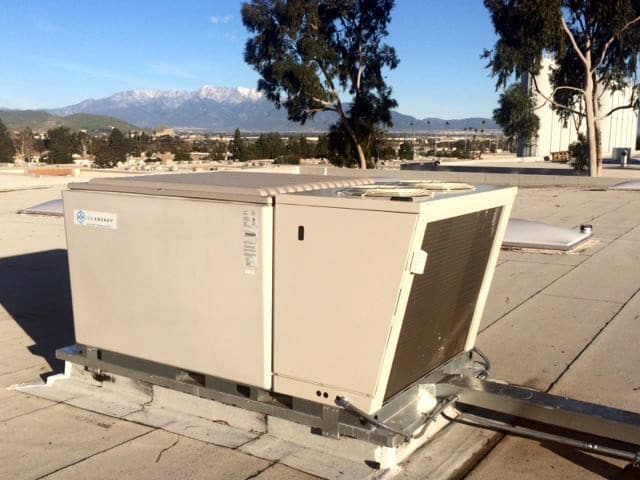Lithium-ion batteries currently dominate U.S. grid-tied energy storage deployment. However, they are far from the only technology out there for storing energy or meeting the problems of mismatch between electricity supply and demand. Yesterday Ice Energy announced that NRG has officially made its Ice Bear systems are available to commercial and industrial (C&I) customers in Southern California.
The 3- to 20-ton systems utilize grid power to freeze water overnight when demand is low and electricity is cheap, and then use the ice for air conditioning during the daytime, including in late afternoon when solar output is waning. Ice Energy estimates that this reduces power load for air conditioning units up to 95% during peak hours, which NRG describes as an “innovative solution to the problem of peak load management”.
Through NRG the city of Tustin, in Orange County, will receive 12 Ice Bears for its facilities across the city. Under the deal, Tustin and C&I customers will get free use of the Ice Bears, which will provide peak storage capacity to utility Southern California Edison (SCE) under 20-year power contracts. Ice Bear and NRG expect to deploy 1,800 of these systems over the next four years, totaling up to 25.6 MW of capacity.
The Ice Bears serve as one component of SCE’s massive 250 MW energy storage procurement. SCE is becoming a laboratory for energy storage, and the utility has seen the deployment of some of the world’s largest battery systems in its service area following the Aliso Canyon gas leak.
In addition to the Ice Bears, NRG is launching an efficiency program with defense contractor Lockheed Martin. These two programs, combined with a demand response program for C&I customers, are part of 60 MW of “preferred resources” that NRG is rolling out through its partnership with SCE.
Correction: An earlier version of this article stated that the Ice Bears were being deployed, when instead NRG has confirmed that they merely have become available for deployment. We regret the error.
This content is protected by copyright and may not be reused. If you want to cooperate with us and would like to reuse some of our content, please contact: editors@pv-magazine.com.









By submitting this form you agree to pv magazine using your data for the purposes of publishing your comment.
Your personal data will only be disclosed or otherwise transmitted to third parties for the purposes of spam filtering or if this is necessary for technical maintenance of the website. Any other transfer to third parties will not take place unless this is justified on the basis of applicable data protection regulations or if pv magazine is legally obliged to do so.
You may revoke this consent at any time with effect for the future, in which case your personal data will be deleted immediately. Otherwise, your data will be deleted if pv magazine has processed your request or the purpose of data storage is fulfilled.
Further information on data privacy can be found in our Data Protection Policy.